Homepage / News Details
Sewage treatment technology
- Categroy:News
- Author:
- Origin:
- Release Time:2022-02-23 15:16
- Views:
【Summary】Modern sewage treatment technology, according to the degree of treatment, can be divided into one, two and three treatment, generally according to the water quality and treatment of the water to determine the degree of sewage treatment.
Sewage treatment technology
【Summary】Modern sewage treatment technology, according to the degree of treatment, can be divided into one, two and three treatment, generally according to the water quality and treatment of the water to determine the degree of sewage treatment.
- Categroy:News
- Author:
- Origin:
- Release Time:2022-02-23 15:16
- Views:
Modern sewage treatment technology, according to the degree of treatment, can be divided into one, two and three treatment, generally according to the water quality and treatment of the water to determine the degree of sewage treatment.
Primary treatment
The main removal of suspended solid pollutants in sewage, most of the physical treatment can only complete the first level of treatment requirements. After primary treatment of sewage, BOD can generally remove about 30%, not up to the discharge standard. The primary treatment is the pretreatment of the secondary treatment.
Secondary treatment
Mainly remove colloidal and dissolved organic pollutants (BOD, COD) in sewage, the removal rate can reach more than 90%, so that the organic pollutants meet the discharge standard, suspended matter removal rate up to 95% effluent effect is good.
Tertiary treatment
Further treatment of refractory organic matter, nitrogen and phosphorus can lead to eutrophication of water soluble inorganic matter. The main methods include biological denitrification and phosphorus removal, coagulation precipitation, sand filtration, activated carbon adsorption, ion exchange and electrodialysis.
The whole process for raw sewage through the coarse screen after sewage lift pump ascension through the grille or sieve rate, after entering the grit chamber, after sand water separation of wastewater into the settling basin for the first time, more than for primary treatment (namely physical treatment), the pond water into biological processing equipment, at the beginning of the activated sludge and biological membrane method, (including aeration tank reactor of activated sludge process, Oxidation ditch, etc., biological membrane method including biological filter, biological rotating disc, biological contact oxidation and biological fluidized bed), biological treatment of effluent into the secondary sedimentation tank, the second pond, the water is disinfected emissions or entering tertiary treatment, primary treatment end to this as the secondary treatment, tertiary treatment including biological denitrification and phosphorus removal, coagulation sedimentation, sand filtration and activated carbon adsorption, Ion exchange and electrodialysis. Part of the sludge of the secondary sedimentation tank returns to the primary sedimentation tank or biological treatment equipment, part enters the sludge thickening tank, and then enters the sludge digestion tank. After dehydration and drying equipment, the sludge is finally used.
Releate News

Time of issue : 2024-04-22 08:56:03

Time of issue : 2024-04-15 16:52:27

Time of issue : 2024-04-09 10:13:04
CONTACT US
PRODUCTS
CALCIUM HYPOCHLORITE
TCCA
SDIC
BCDMH
FEEDBACK
© 1999-2018 北京网站建设有限公司 Copyright © 2012-2022 All Rights Reserved Powered by www.300.cn 冀ICP备12012949号 津公网安备 12010302002173号 Seo tag

